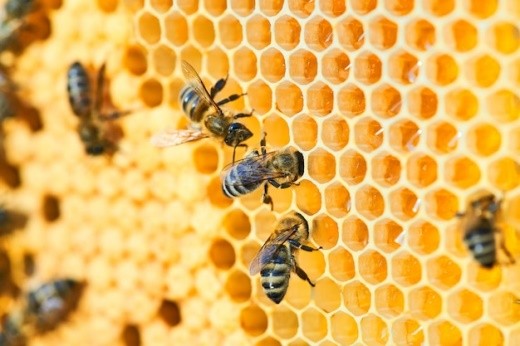A. Definition and Purpose
Beehive investments involve allocating capital into beekeeping ventures or related industries to generate returns. These investments are aimed at supporting bee populations, promoting sustainable agriculture, and capitalizing on the growing demand for bee products to get Credit Union Rexburg.
B. Benefits of Beehive Investments
Investing in beehive ventures offers various advantages, including potential financial returns, environmental benefits, and the satisfaction of supporting a crucial aspect of agriculture. Beehive investments also provide opportunities for diversification and participation in the rapidly expanding bee products market.
C. Types of Beehive Investments
There are several types of bee-related investment opportunities available to investors, ranging from hive ownership programs to honey production and sales. Understanding the different options is essential for making informed investment decisions and maximizing returns.
II. Understanding Beehive Investment Opportunities
A. Beekeeping Ventures
Beekeeping ventures involve owning and managing beehives to produce honey, beeswax, propolis, and other bee products. Investors can participate in hive ownership programs or provide pollination services to agricultural operations.
- Hive Ownership Programs
Hive ownership programs allow investors to purchase or lease beehives and receive a share of the honey production or pollination revenue. These programs provide an opportunity to generate passive income while supporting sustainable beekeeping practices.
- Pollination Services
Many agricultural crops depend on bees for pollination, making pollination services a lucrative aspect of beekeeping. Investors can offer their beehives for rent to farmers and earn income based on the pollination services provided.
B. Honey Production and Sales
Honey production and sales involve harvesting honey from beehives and selling it to consumers or businesses. Investors can focus on producing specialty honey varieties or creating value-added products to differentiate their offerings in the market.
- Specialty Honey Varieties
Specialty honey varieties, such as Manuka honey or lavender honey, command premium prices due to their unique flavors and health benefits. Investing in the production of specialty honey can yield higher returns compared to conventional honey varieties.
- Value-added Products
In addition to selling raw honey, investors can create value-added products such as beeswax candles, honey-based skincare products, and flavored honey spreads. These products cater to niche markets and offer opportunities for increased profitability.
C. Beeswax and Propolis Extraction
Beeswax and propolis are valuable byproducts of beekeeping with various commercial applications in industries such as cosmetics, pharmaceuticals, and crafts.
- Cosmetic and Pharmaceutical Applications
Beeswax is used in the formulation of skincare products, lip balms, and pharmaceutical ointments due to its moisturizing and protective properties. Propolis, a resin-like substance produced by bees, is known for its antimicrobial and antioxidant properties and is used in medicinal products.
- Candle Making and Craft Supplies
Beeswax candles are highly sought after for their clean-burning properties and natural fragrance. Investing in beeswax extraction and processing can supply raw materials for candle making and craft supplies, catering to eco-conscious consumers.
III. Risks and Considerations in Beehive Investments
A. Environmental Factors
Beehive investments are susceptible to environmental factors such as climate change and pesticide exposure, which can impact bee health and productivity.
- Climate Change
Climate change poses challenges for beekeeping by altering seasonal patterns, affecting flowering cycles, and increasing the frequency of extreme weather events. These changes can disrupt bee colonies and reduce honey yields.
- Pesticide Exposure
Pesticides used in agriculture can harm bees by contaminating nectar and pollen sources, weakening immune systems, and causing colony collapse disorder. Investors must assess the potential risks of pesticide exposure when evaluating beekeeping opportunities.
B. Market Volatility
The bee products market is subject to fluctuations in honey prices, demand for bee products, and regulatory changes, which can affect the profitability of beekeeping ventures.
- Fluctuations in Honey Prices
Honey prices are influenced by factors such as supply and demand dynamics, global production levels, and consumer preferences. Sudden changes in honey prices can impact the revenue generated from honey sales and the overall profitability of beekeeping operations.
- Demand for Bee Products
The demand for bee products, including honey, beeswax, and propolis, can vary depending on consumer trends, health fads, and marketing efforts. Investors should monitor market trends and consumer preferences to identify emerging opportunities and potential risks.
C. Operational Challenges
Beekeeping requires careful management of bee colonies and adherence to best practices to mitigate the risk of disease outbreaks, pest infestations, and other operational challenges.
- Disease Management
Bee diseases such as Varroa mites, American foulbrood, and nosema can weaken bee colonies and reduce honey production. Implementing disease prevention and control measures is essential for maintaining healthy bee populations and ensuring the long-term viability of beekeeping operations.
- Hive Maintenance and Management
Regular hive inspections, hive maintenance, and pest management are critical aspects of beekeeping. Investors must allocate resources for hive maintenance and invest in training and education to effectively manage bee colonies and minimize operational risks.
IV. How to Get Started with Beehive Investments
A. Research and Due Diligence
Before investing in beekeeping ventures, investors should conduct thorough research and due diligence to understand the risks, costs, and potential returns associated with different investment opportunities.
- Understanding Beekeeping Basics
Investors should familiarize themselves with beekeeping fundamentals, including hive management, bee biology, and honey production processes. Books, online resources, and beekeeping courses can provide valuable insights into the intricacies of beekeeping.
- Evaluating Investment Opportunities
When evaluating beekeeping opportunities, investors should consider factors such as location, climate suitability, market demand, and the expertise of beekeeping partners. Assessing the financial viability and sustainability of beekeeping ventures is essential for making informed investment decisions.
B. Partnering with Experienced Beekeepers
Partnering with experienced beekeepers and industry professionals can provide investors with valuable guidance, support, and mentorship in navigating the complexities of beekeeping investments.
- Joining Beekeeping Associations
Joining local beekeeping associations and networks allows investors to connect with experienced beekeepers, exchange knowledge and ideas, and stay informed about industry developments. Networking with beekeeping professionals provides opportunities for collaboration and mentorship.
- Seeking Mentorship and Guidance
Seeking mentorship from seasoned beekeepers and industry experts can offer investors personalized advice and insights based on real-world experience. Mentors can help investors navigate challenges, avoid common pitfalls, and optimize their beekeeping investments for success.
C. Diversifying Investment Portfolio
Diversifying investment portfolios with beekeeping ventures can provide investors with additional sources of income and hedge against market volatility and economic downturns.
- Allocating Funds Wisely
Investors should allocate funds strategically across different beekeeping opportunities, considering factors such as risk tolerance, investment objectives, and time horizon. Diversifying investments across hive ownership, honey production, and value-added products can help spread risk and maximize returns.
- Exploring Alternative Investments
In addition to traditional beekeeping ventures, investors can explore alternative bee-related investments such as pollination services, beeswax extraction, and propolis production. Exploring diverse investment opportunities allows investors to capitalize on emerging trends and niche markets within the bee products industry.
V. Conclusion
In conclusion, beekeeping investments offer unique opportunities for investors to generate financial returns while supporting sustainable agriculture and bee conservation efforts. By understanding the different types of beekeeping ventures, assessing risks and considerations, and leveraging resources and expertise, investors can embark on a rewarding journey into the world of bee investments. Credit Union Rexburg is committed to helping individuals achieve their financial goals and explore investment opportunities that align with their values and objectives. Contact us today to learn more about beekeeping investments and how we can support your financial journey.


